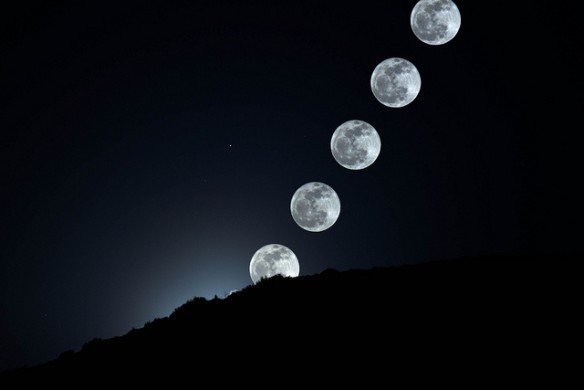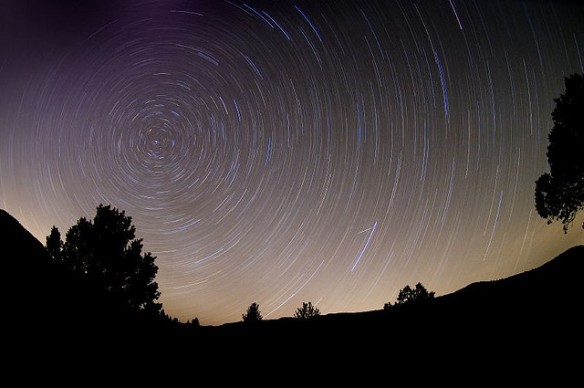Last Friday was a full moon, and a lunar observance day in all Buddhist traditions. Thanks to last week’s Monastic Immersion Program at DRBU, I was lucky enough to spend some time at Abhayagiri Monastery, a Thai Forest monastery just a short distance north of the City of Ten Thousand Buddhas (CTTB). The monastery is tucked away in the forest on the small mountain, absolutely beautiful in its natural simplicity. Several well-swept and well-maintained wooden huts are scattered about the mountain slopes on winding paths, with a central shrine nestled within a peaceful grove at the peak.
I was chatting with another layperson… asking him what this particular lunar holiday would be in his tradition.
Between the program’s presentations, I was chatting with another layperson about the full moon, asking him what this particular lunar holiday would be in his tradition. He answered that they would be observing Esala Dhamma, the celebration of the coming of the Dhamma (Sanskrit: Dharma) into the world, on the day of the Buddha’s first sermon to his disciples twenty-five hundred years ago. Then he asked me if we also observe the same holiday at CTTB.
I shook my head and looked down thoughtfully. “No,” I said, “That holiday wouldn’t really have the same significance in our tradition.” This seems like a simple enough topic, but reflecting on it, I started my way down an interesting train of thought. When did the Dharma actually come into the world? The question itself is inextricably woven into our interpretation of cosmology and history; how we interpret it depends on our historical worldview and its scope in time and space. This question, perhaps timeless, is no less nuanced in the modern age than it has been throughout Buddhist history.
Traditionally the school tells the same history as all other schools of Buddhism, of the long lineage of Buddhas that goes back endlessly into a past without beginning.
Abhayagiri follows the Theravadan, or Southern Tradition of Buddhism. Traditionally the school tells the same history as all other schools of Buddhism, of the long lineage of Buddhas that goes back endlessly into a past without beginning. All of these Buddhas taught the Dharma—so it follows, I thought, that the Dharma also has no beginning. That being said, I’ve met more than a few westerners like the layperson I was chatting with, who tend to frame Buddhist history, understandably, in a way that makes sense within modern culture. But why would I find this phenomenon more often within the Southern Tradition? The best guess I have, so far at least, is that it has something to do with the western history of material and intellectual colonialization of South Asia, including the western scholastic study of Buddhism that in the past has focused more on the Southern Tradition, whose scriptures have been more easily framed in a modern western scientific and historical worldview. Or perhaps it’s just that these earlier scriptures, being shorter and more simply framed themselves, are more easily placed within any given worldview, modern or not. Whatever the reason, it seems that this kind of interpretation of Buddhist history is more popular in the Theravada, at least in the West.
… not only have there been infinitely many Buddhas throughout time in our world, going back infinitely into the past, but there are also infinitely many worlds throughout infinite space …
For the Mahayana, or Northern Tradition, the story becomes a bit more rich. For starters, not only have there been infinitely many Buddhas throughout time in our world, going back infinitely into the past, but there are also infinitely many worlds throughout infinite space, with each world having its own Buddhas teaching the Dharma, and its own timeline having its own beginningless history. To complicate matters just a bit more, the Flower Garland (Sanskrit: Avatamsaka, Chinese: 華嚴 Huayan) School of Buddhism, one of the most influential schools of the Mahayana, places the first teaching of the Buddha of our world several days before that first sermon given in the Theravadan canon.
As hard as this may seem to wrap one’s head around conceptually, I think from a direct experiential perspective, this is actually something that most people can get a taste of quite easily.
This teaching is the Avatamsaka Sutra, which takes place in its entirety at the moment of the Buddha’s enlightenment. Within this transcendent moment, the Buddha travels throughout time and space, throughout the heavens and throughout many other worlds, teaching the Dharma to the Bodhisattvas who dwell there. From a modern scientific and historical perspective, this story is fantastic, unbelievable; vast spans of time unfold outward in both time and space, all originating from a single moment of perception. As hard as this may seem to wrap one’s head around conceptually, I think from a direct experiential perspective, this is actually something that most people can get a taste of quite easily. If we look, we know that the only experience we ever have is happening now—we only know the past through our memories, and even our memories, experientially, are only ever found in the present. What is history then, if not a narrative told in the mind, all in the space of a thought?
We only know the past through our memories, and even our memories, experientially, are only found in our present experience. What is history then, if not a narrative told in the mind, all in the space of a thought?
I turned these perspectives over in my mind for a moment, standing there on the mountain, eyes lowered pensively, the sun high overhead, the full moon undoubtedly tracing its path somewhere under the earth below, as I pondered my response to the question posed concerning Esala Dhamma. At a loss on where to begin, I decided to take a simpler route. “This month we celebrate Guanyin Bodhisattva’s enlightenment,” I said—also true, and, I thought, not likely to lead directly to any reality-shattering conflicts of history. But the question remains: To what extent is Buddhism today dependent on its complex history, and how can we begin to understand what that history is? I think it’s likely that this is also a question with more than one true answer; and likely also a question worth pondering for a moment.


